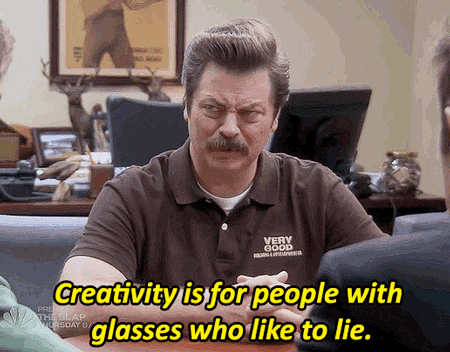
Right Now with Mario Smith (LinkedIn/Twitter)
What I’m reading: The long list of things I still need to accomplish in order to finish my retirement paperwork.
What I’m watching: Modern Family.
What I’m listening to: I’m listening to my dog cry and beg because I won’t give him extra treats. He usually receives 2 small treats for certain things. We’re in the process of getting him down a few pounds in order to fly across the ocean to the US from Madrid. The difference between 99lbs and 100lbs is about $1400. OUCH!
“Okay! I’m in charge I want everything my way.”
Have you heard this before? WOW! Right? The infectious disease and frustrating challenge after introducing an ineffective leader into an organization hinders progress, ruins morale, and causes a disastrous break down of the organizations vision and goal. Only a few circumstances are more frustrating than following an ineffective leader. These so called leaders can be categorized under various labels of ineffectiveness, such as the insecure leader, the controlling leader, the morale-breaking leader, and the all-about-me leader. These are the very same leaders that arrive at work and demand change the very first day.

What does that say to the organization? What are your peers and subordinates supposed to think? Is the new leader’s expert analytical skills so superior that they were able to find all the faults and areas of improvement in just a few hours? The answers to these questions can be summed up into one sentence; that leader doesn’t have the respect for the organization, their peers and subordinates, and the visions and goals set out by the organization.
“I want this and that to change.”
I have learned over the years that the organization functioned before your time, and it will function after you leave. The ineffective leader will introduce themself with the mindset that if they aren’t present; the work center will fall apart. In a work center that I was involved in, the middle tier of leadership led many neighboring work centers within our organization. We led them well and did so for a long time. We were praised on several occasions and had many challenges to overcome; mainly short falls in manpower and time. Things were running smoothly and without any negative influences; we met our goals and exceeded expectations. As we received new leadership within our work centers, the changes began to come in like fifty foot waves crashing into the coastline during a hurricane. To make it worse, we had no warnings, no sirens; we only had unexpected changes without reasoning. Needless to say, this approach of leadership was highly ineffective within the organization.
Having this very same mindset will tell your peers and subordinates that they are unable to lead and manage the very work center they are involved in; the work center they may have been leading previously. As many leaders forget, the middle tier of leadership is the most effective and can have a significant impact within the organization. With this poor approach, you cannot expect your peers and subordinates to follow you, respect you, embrace the very same visions you have, or develop professionally from your mediocre attempt of influencing. The overall production at your work center will decline. Moreover, the amount of petty arguments that will spawn from this abrupt change will be disastrous and will only bring down morale in your work center. You must go back and reevaluate what really needs to happen. An informed, collaborative thought-out evaluation of the work center is the most effective way of reaching your work center.
“I know it’s my first day, but you guys need to shape up.”

Introducing such drastic changes to your personnel will be a great way to breed skepticism and disrespectful responses, which will further add to the playground mentality already in place. From your subordinates’ view, they will wonder why these changes were made in such a drastic rush. They will also start to second-guess their abilities with their responsibilities in the work center and wonder, “why was my performance, all of the sudden, not good enough for the new leader’s expectations?” More importantly, they will ask, “how did the new leader obtain all this information?” With their ineffective approach, your new leader brought dismay within the work center that will eventually reach the entire organization unless dealt with.
A Real Introduction Into The Work Center
Leaders need to approach new positions carefully and with collaborative evaluations – while keeping organizational visions and goals in mind – to bring any improvement to the organization. My very first supervisor taught me that real leaders take time, upon arrival, and evaluate the work centers. By doing this, leaders will identify the areas working efficiently and the areas needing improvement. This approach will also help leaders identify the top 10 percent, the middle 80 percent, and the bottom 10 percent in individual performance. This means of evaluation, which I have found out in my own personal experience, in most vital to any organization.
Evaluate And Challenge
Evaluating your work center and personnel should be first on your list as a new leader in any new organization. After moving from Okinawa, Japan to Camp Lejeune, NC, I knew I would be a new platoon leader that would be in charge over many Marines. Taking my previous supervisor’s advice, I wanted to see what I had on my hands with the seasoned Marines in our platoon and the new subordinates whom just joined the military. I challenged the entire platoon with different tasks according to the positions they held. I found out that many handled the tasks with ease, but the majority had struggled in completing their tasks.
With the findings of my evaluation completed, I was able to move each individual into the position they would best serve and excel at. Even though I moved them into specific positions, I knew I would still need to influence and teach them, as well as, encourage them to influence and teach their peers and subordinates. By gaining the understanding of my platoon through this challenge, I was able to assign the best people in each critical position; we all benefitted from each other’s strengths and influence. Moreover, I was able to earn their trust by encouraging them to build on their strengths so they could provide assistance to their fellow Marines.
Introducing Improvement
After you evaluate and challenge the work center, you will have found areas doing great, areas doing fine, and the areas that need improvement. Additionally, the evaluation process gives you an understanding of which personnel should be placed in positions needing improvement and which personnel need more training. By placing each team member in their strength zones you’ll be able to aid their development, giving them a better chance to succeed. You’ll also give your organization the exceptional productivity it needs to produce positive results; If they succeed, the organization will succeed. You wouldn’t put your slowest runner up against the fastest opponent, would you? You certainly wouldn’t put a sale representative without architectural experience in charge of designing a bridge, would you? As a leader, your primary purpose is to develop your personnel through encouragement and giving credit and recognition when it is most needed. You must express your concerns and goals to your personnel so that they may better help you and the organization reach a common goal.
One of the biggest neglects some of our leaders have is responsibility and accountability. As a leader in an organization, you are responsible for everything your personnel produce, as well as what they don’t. Everything from good-to-bad results to the professional conduct that is displayed in the work center, you are ultimately responsible. Moreover, you are accountable for the actions each person takes within that realm of conduct. You are responsible for keeping your personnel up-to-date with all changes and why they have been implemented. Demanding your personnel to follow you will only influence their ability to refute anything you do. You must be able to lead them as well as manage the work center. Introducing drastic, unneeded change, without reasoning, will cause unwanted problems at all levels within your work center. Influence your personnel, and then lead them. With your encouragement, the right influence, sound communication and direction, your peers and subordinates will follow you without hesitation.

